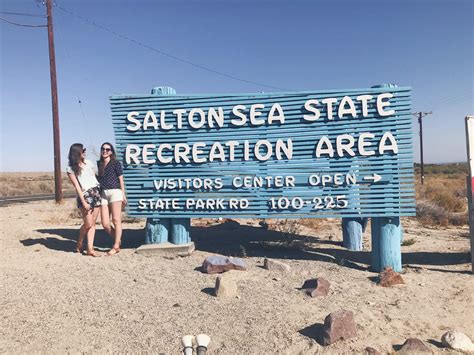A university study conducted last year found that the Salton Sea Southern California is responsible for a high incidence of asthma in those who reside nearby, under the direction of Dr. David Lo, a professor of biomedical sciences at the University of California, Riverside. It was discovered that the toxins in the sea may be contributing to lung irritation in nearby residents.

Salton Sea Southern California Possible Profitable Business Venture (Photo: cameraswithfilm)
Symptoms That Are Common Among The Residents Of Salton Sea Southern California
According to the report of CBS News, the 4-year-old Damien Lopez has symptoms that are common among residents in the area of Salton Sea Southern California.
His mother Michelle Lopez stated, “I try to control him because his cough gets very wheezy.”
“Control” often means visiting pediatric nurse Christina Galindo at Pioneers Memorial Hospital.
Galindo told CBS News, “I can see up to 25 to 30 patients a day, and maybe half of those are battling with respiratory problems.”
According to data from the US Centers for Disease Control and Prevention, a 2019 study from the University of Southern California found that between 20% and 22% of children in the area have symptoms similar to asthma, which is slightly more than triple the national rate for asthma.
The Imperial Valley was flooded by water from the Colorado River in the early 1900s after a dam broke, creating the Salton Sea. According to Lo, who spoke with CBS News, its main source now is adjacent farm runoff, which contains fertilizer, heavy metals, and pollutants like arsenic and selenium.
This hazardous mixture lingered on the ocean floor for many years. However, the Salton Sea Southern California is fast shrinking in the absence of water replenishment from the Colorado River, exposing a poisonous and dry lakebed to the wind.
READ ALSO: Benefits Of Using A Humidifier: Here Are The Things That You Need To Know!
The Salton Sea Southern California Possible Profitable Business Venture
A new industry is also being drawn to it in order to harvest lithium, a chemical that is present in the lakebed.
“California is going to need every bit of lithium they can get if they want to electrify every vehicle by 2035,” said Frank Ruiz, director of California Audubon’s Salton Sea program and a board member for the Lithium Valley Commission, a state agency that regulates lithium mining in the area.
In a location with some of the state’s greatest rates of poverty, lithium, according to Ruiz, might be liquid gold. It’s not yet apparent whether lithium poses a danger or a lifeline.
Ruiz stated, “This is a toxic, toxic dust,” and he hoped the Salton Sea Southern California’s residents wouldn’t suffer health consequences as a result of what may otherwise be a profitable business venture.
READ ALSO: Children’s Screen Time Has A Potential Risk Of Developmental Problems Years Later

















































